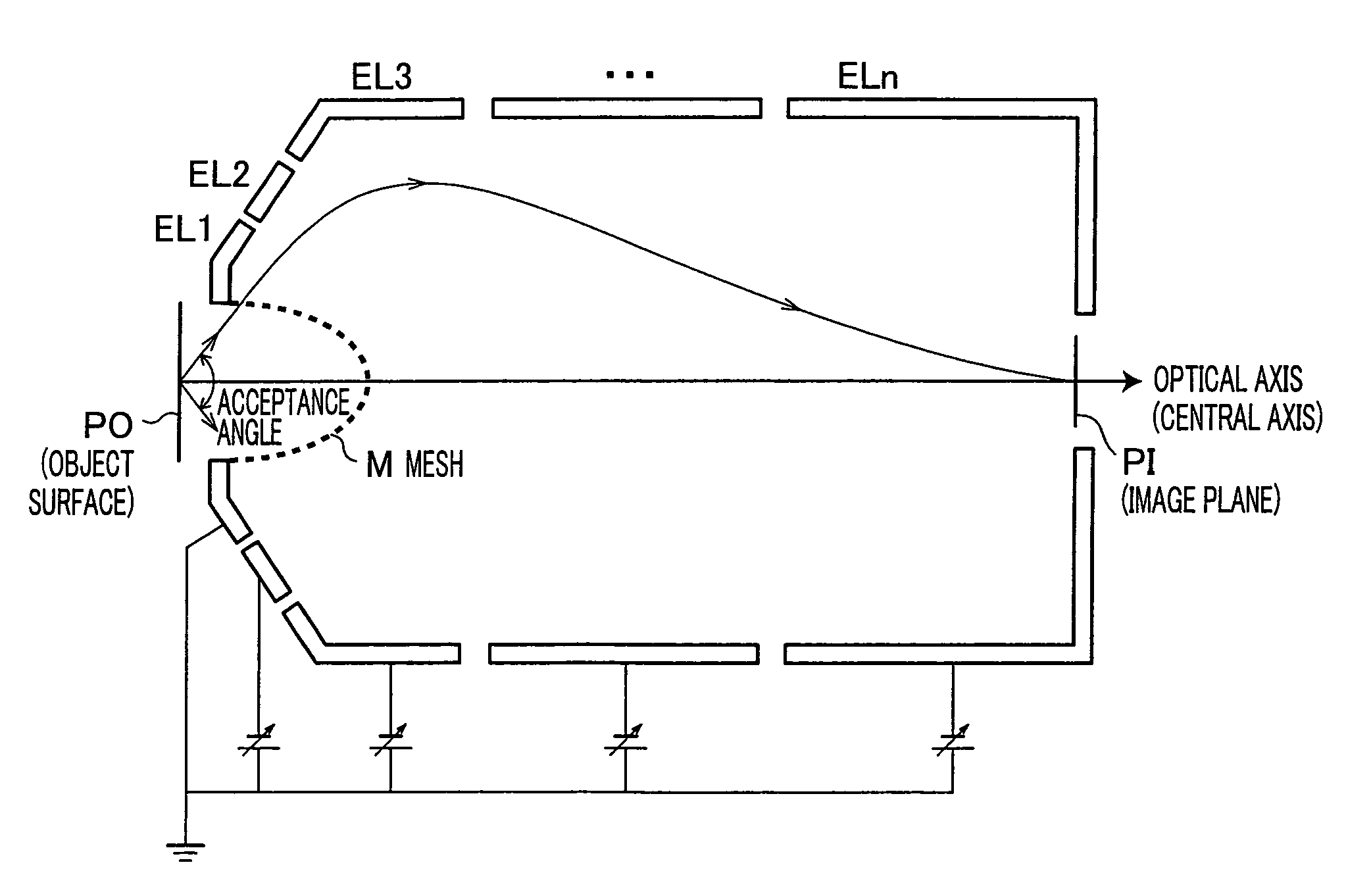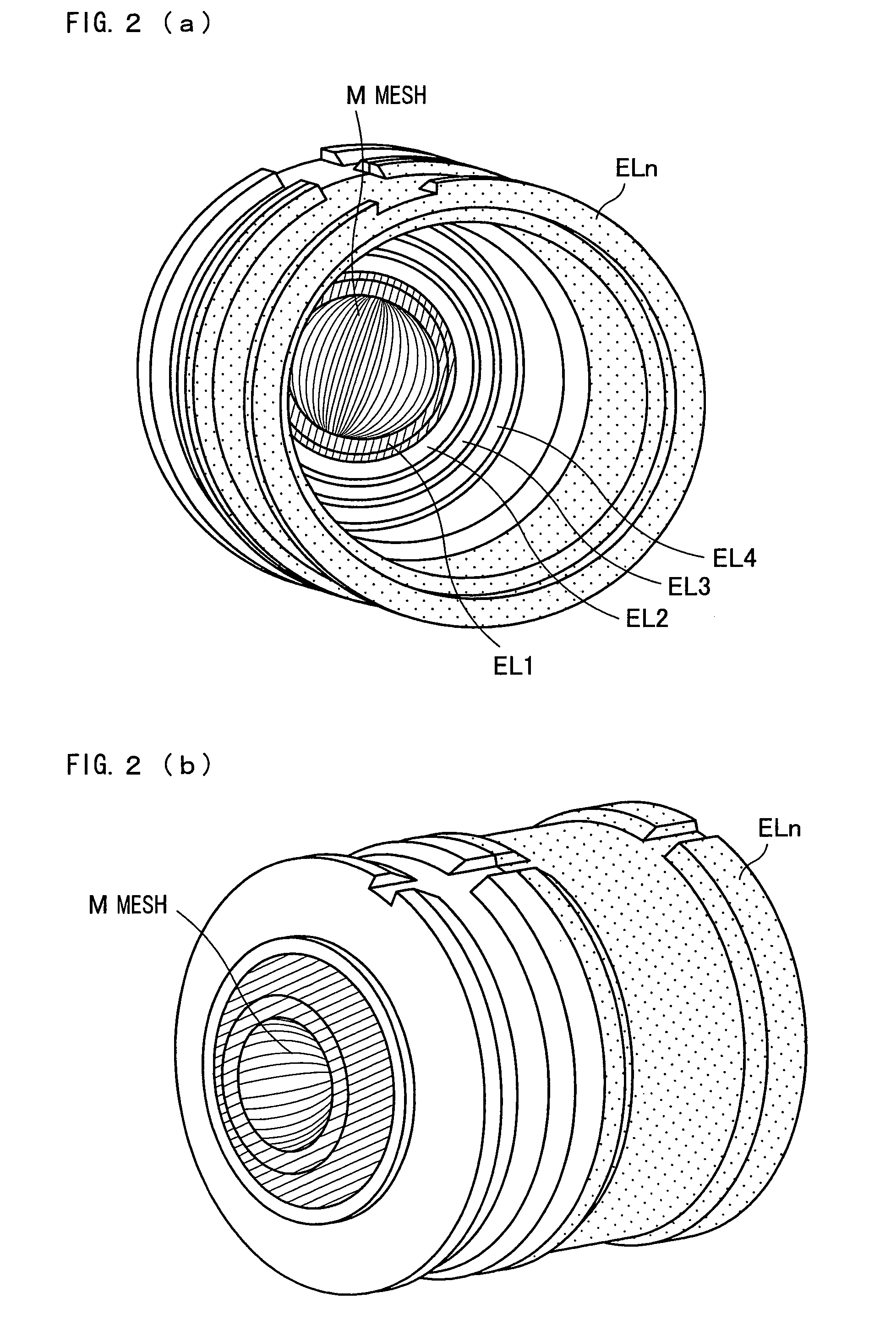Spherical aberration corrected electrostatic lens, input lens, electron spectrometer, photoemission electron microscope and measuring system
an electrostatic lens and spherical aberration technology, applied in the direction of beam deviation/focusing, heat measurement, instruments, etc., can solve the problems of general electrostatic lens not being able to focus, acceptance angle of about 30° or less is insufficient for performing structural analysis, and the effect of wide acceptance angl
- Summary
- Abstract
- Description
- Claims
- Application Information
AI Technical Summary
Benefits of technology
Problems solved by technology
Method used
Image
Examples
Embodiment Construction
1. Spherical Aberration Corrected Electrostatic Lens According to the Present Invention
[0023]In FIG. 1, an embodiment of the spherical aberration corrected electrostatic lens according to the present invention is illustrated. The lens is provided with a mesh M, a plurality of electrodes EL1 to ELn, and a power source (not shown). The mesh M has an ellipsoid shape or a shape close to the ellipsoid shape, and is axially symmetric about an optical axis. The mesh M, which is concave toward an object plane, is so as to form a magnified virtual image having a negative spherical aberration, for electron beams or ion beams emitted within a certain opening angle from a predetermined position of the object plane. The plurality of electrodes EL1 to ELn, which have concentric surfaces, form a convergent electric field that form a real image from the magnified virtual image and generate a positive spherical aberration. The power source is used for respectively applying arbitrary voltages onto th...
PUM
 Login to View More
Login to View More Abstract
Description
Claims
Application Information
 Login to View More
Login to View More - R&D
- Intellectual Property
- Life Sciences
- Materials
- Tech Scout
- Unparalleled Data Quality
- Higher Quality Content
- 60% Fewer Hallucinations
Browse by: Latest US Patents, China's latest patents, Technical Efficacy Thesaurus, Application Domain, Technology Topic, Popular Technical Reports.
© 2025 PatSnap. All rights reserved.Legal|Privacy policy|Modern Slavery Act Transparency Statement|Sitemap|About US| Contact US: help@patsnap.com



